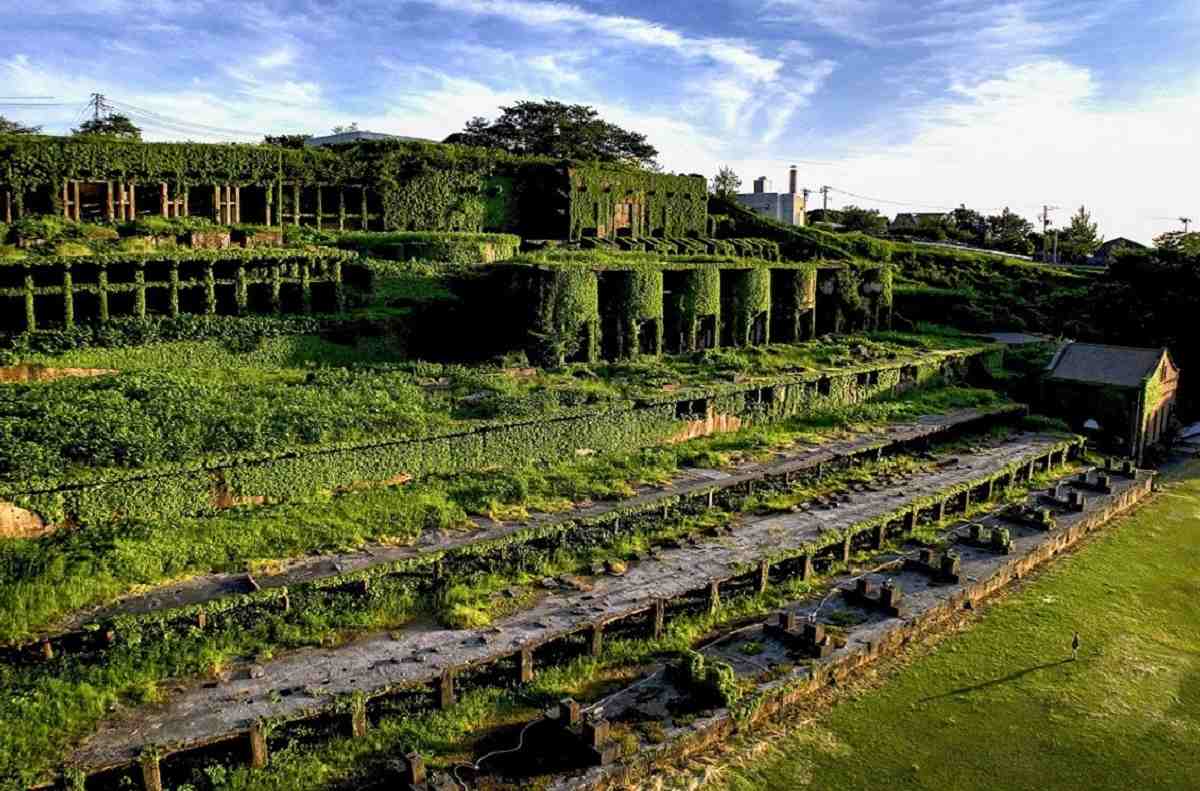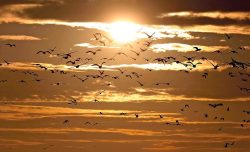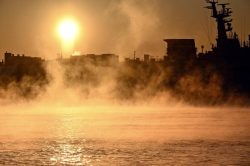World Heritage Listing Heavy Influenced by Political, Historical Realities; Sado Gold Mines in Niigata Pref. Are Case in Point

The site of the Kitazawa Flotation Plant, which supported gold production in the early Showa era (1926-1989), is seen in Sado, Niigata Prefecture. Areas around the plant were excluded from World Heritage Site listing based on a recommendation of the International Council on Monuments and Sites.
13:00 JST, August 25, 2024
UNESCO’s World Heritage Committee has decided to add the Sado Island Gold Mines in Sado, Niigata Prefecture, to its list of World Heritage Sites. The decision to include the complex came after an agreement between Japan and South Korea to install a permanent on-site exhibition at the mine describing the lives of the workers from the Korean Peninsula and the harsh working conditions they faced.
South Korea had initially opposed the mines’ registration, claiming that the complex was a site that used forced labor of people from the Korean peninsula during World War II.
The unusual development leading up to the registration reflects the reality of World Heritage Sites, which have come to be heavily influenced by international politics.
“Entire history”

A diorama of Sodayu Tunnel at the Aikawa Gold and Silver Mine in Sado, Niigata Prefecture.
An exhibition that opened on July 28 at the Aikawa History Museum in Sado makes use of historical records to detail the harsh conditions faced by the mines’ workers.
Among the displays at the exhibit is one that explains, “Records show there were times when miners worked for 28 days out of the month on average” and “Records indicate there was a labor dispute over demands for better treatment.”
The exhibition was installed as part of an agreement between Tokyo and Seoul.
In June, the International Council on Monuments and Sites (ICOMOS), an advisory body to UNESCO, requested that Japan remove from its proposal any areas that were extensively developed during the Meiji era (1868-1912) and onward.
Yasuyoshi Okada, a professor emeritus at Kokushikan University and chairman of the Japan ICOMOS National Committee, said: “The ICOMOS apparently had Japan-South Korea relations in mind [when it made that request]. Registration of World Heritage Sites is often influenced not only by cultural merits but also the political environment of the countries involved.”
While accepting the Sado mines’ registration, the South Korean delegation at a meeting of World Heritage Committee on July 27 referenced sites related to the Meiji era industrial revolution that were added to the World Heritage list in 2015 when it argued that both the bright and dark sides of the site should be remembered. At that time, South Korea and Japan had heated discussions over “forced labor.”
UNESCO released a resolution at the meeting calling for an explanation of the Sado mines’ “entire history” to be included at the site.
Akira Ide, a professor of tourism at Kanazawa University, said industrial heritage tends to have a negative history steeped in labor exploitation, health hazards, environmental destruction and other issues.
“Showing the ‘entire history’ has become the norm in recent years when getting a place designated as a World Heritage Site. It’s necessary not only to present the glorious past of the Sado mines but also to face the negative aspects,” Ide, who is an expert on World Heritage Sites, said.
In recent years, several countries have been involved in a series of conflicts over World Heritage Sites.
In 2017, Israel withdrew from UNESCO in protest after the international organization designated Hebron/Al-Khalil Old Town in the Palestinian autonomous region a World Heritage Site.
In 2021, the World Heritage Committee decided to postpone indefinitely its deliberation of registering Gdansk Shipyard, the birthplace of Poland’s labor union movement Solidarity, as a World Heritage Site due to conflicts between Eastern European countries and Russia. Solidarity ultimately played a major role in the fall of the Iron Curtain, and Poland nominated the shipyard for registration.
Meanwhile, nations have lately been nominating all kinds of sites, including recent ones, because most places with easily recognizable value have already been designated. Moreover, countries will likely go on registering World Heritage Sites, as the sites attract tourists.
However, many relatively recent historical sites are connected in some way to wars, territorial disputes or religious issues, which make them a frequent source of conflict.
New approach
Last year, UNESCO began recognizing “Sites of Memory,” which are associated with recent conflicts, registering three sites, including Belgium and France’s “Funerary and memory sites of the First World War (Western Front),” which the two countries jointly proposed.
At this year’s committee meeting, UNESCO added “Human Rights, Liberation and Reconciliation: Nelson Mandela Legacy Sites” to the “Sites of Memory” list. The group of sites includes places honoring the former South African president who led the country’s efforts to abolish apartheid.
The “Sites of Memory” list was created following a development in 2018 in which UNESCO held off adding “Funerary and memory sites of the First World War (Western Front)” to the heritage list following arguments that questioned whether it was appropriate to register sites associated with wars and conflicts.
UNESCO held subsequent discussions to figure out how to treat sites related to recent conflicts, human rights abuses, liberation movements under colonization and other issues. UNESCO established the relevant procedures and settled on “places for peaceful reflection” as the criteria for the registration of controversial sites.
Chihei Suzuki, a senior cultural properties specialist at the Cultural Affairs Agency who participated in the discussions, praised the new approach.
“It is noteworthy that not only the sites of wars and massacres were recognized but also the value of the cemeteries and monuments associated with them,” Suzuki said.
Former Director General of UNESCO Koichiro Matsuura said more sites associated with politically complicated backgrounds may be nominated.
“Human history has bright sides, but there are also dark sides, like war and slavery. Ensuring that World Heritage Sites are not forgotten is an important contribution to peace,” Matsuura said.
Related Tags
"Features" POPULAR ARTICLE
-

Sanrio to Open Museum in Yamanashi Pref. Dedicated to Founder, Exhibits Include Hello Kitty, Other Characters
-

Autumn Foliage Surrounds Visitors to Tokyo’s Showa Kinen Park
-

My Daughter No Longer Speaks to Me, But I Want to See Her and My Grandchild
-

Kumamoto: Public Bath Refurbished as Library Where You Can Chat, Take Photos
-

Frozen Vegetables: Demand Rises for Convenient, Tasty Domestic Produce
JN ACCESS RANKING
-

Tokyo Economic Security Forum to Hold Inaugural Meeting Amid Tense Global Environment
-

Keidanren Chairman Yoshinobu Tsutsui Visits Kashiwazaki-Kariwa Nuclear Power Plant; Inspects New Emergency Safety System
-

Imports of Rare Earths from China Facing Delays, May Be Caused by Deterioration of Japan-China Relations
-

University of Tokyo Professor Discusses Japanese Economic Security in Interview Ahead of Forum
-

Japan Pulls out of Vietnam Nuclear Project, Complicating Hanoi’s Power Plans

























